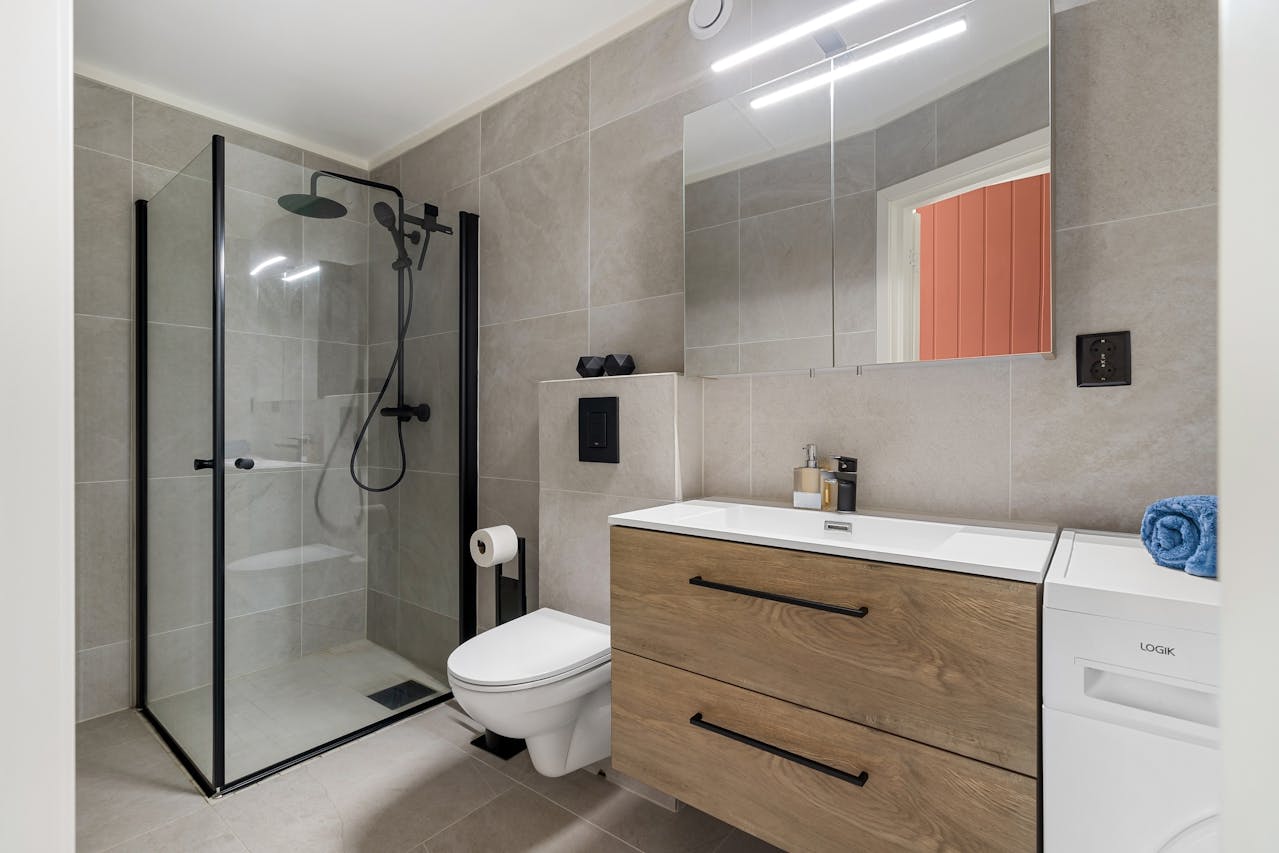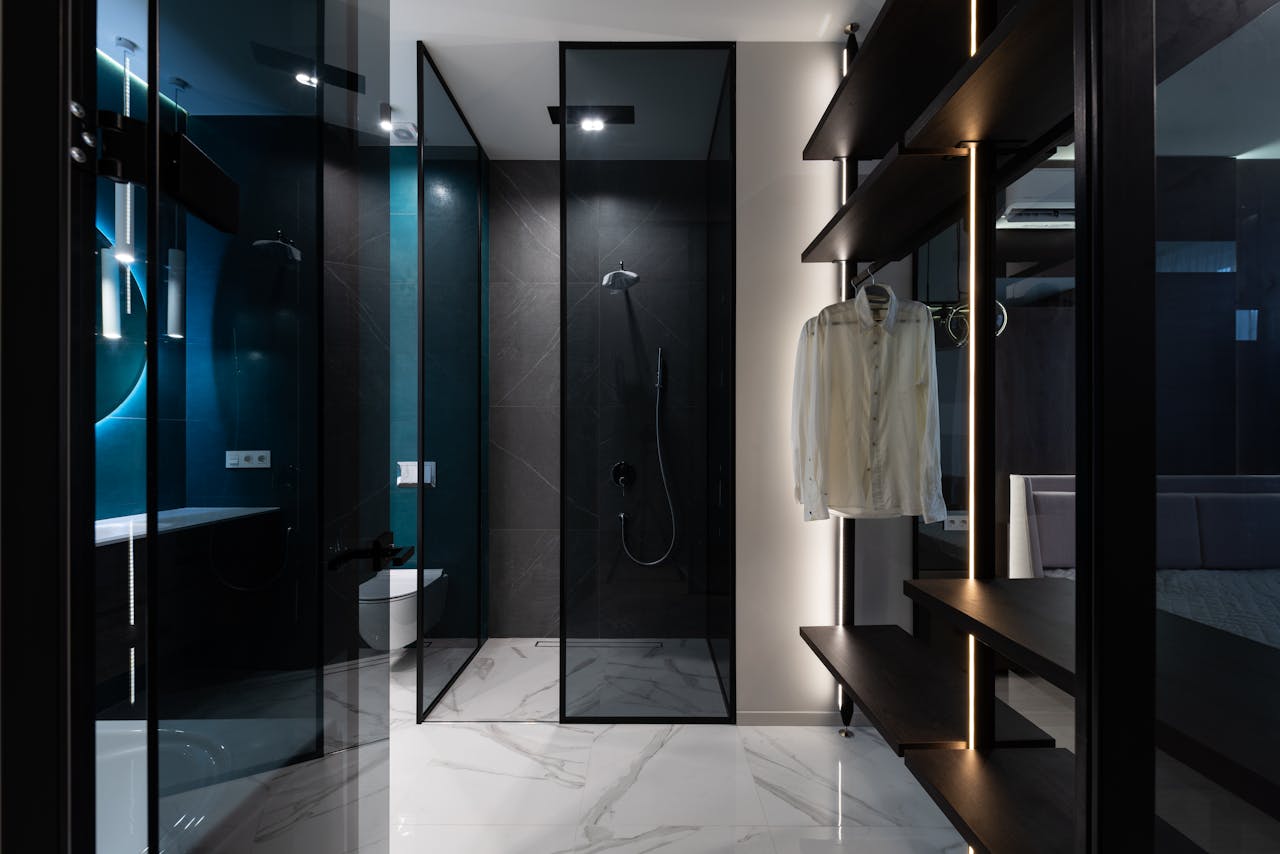How Much Does It Cost To Install A Glass Shower Screen?

Installing a glass shower screen involves various costs, influenced by the material, size, design, and labour. Understanding these expenses helps homeowners plan their budgets accurately and compare options effectively. This article outlines typical costs, key factors, and practical tips to guide decision-making without bias or unnecessary embellishment.
Average Installation Cost
Glass shower screen installation typically ranges from AUD 800 to AUD 2,500, depending on variables such as screen type and complexity. A standard, framed or semi-frameless screen measuring approximately 1.8 m by 1 m typically costs between AUD 800 and AUD 1,200.
Frameless glass screens, which require thicker tempered glass (usually 10 mm or 12 mm), can range from AUD 1,500 to AUD 2,500. Prices may increase if bespoke dimensions or custom hardware are needed. Labour charges commonly range from AUD 200 to AUD 500, depending on the region and the installer's experience.
Rarely, very simple DIY-friendly kits might start closer to AUD 600, but professional installation ensures correct sealing and alignment.
Factors Affecting Cost
Several elements influence the final installation price:
- Glass Thickness and Type: Thicker glass (10 mm versus 8 mm) is more expensive due to its enhanced durability. Clear tempered glass is standard, but options like frosted or patterned glass incur additional fees (typically 10–20% higher).
- Screen Style: Framed screens are more economical, often resulting in reduced material and hardware costs. Semi-frameless designs strike a balance between aesthetics and price, while fully frameless screens command premium pricing due to their complex hardware and precise fitting requirements.
- Dimensions and Customization: Standard shower alcove sizes (e.g., 900 mm x 900 mm) are more cost-effective. Custom bathroom layouts—such as curved, L-shaped, or irregular enclosures—require tailored glass cuts and bespoke hardware, potentially adding AUD 300 to AUD 800 for customization.
- Hardware and Accessories: Handles, towel bars, hinges, and seals vary in price. Basic chrome-finish hardware is more affordable, whereas stainless steel, brass, or designer finishes can add AUD 100–AUD 300 to the total.
- Location and Accessibility: Installation in hard-to-reach areas or multi-story buildings may require additional labour (e.g., lifts, scaffolding) and attract travel surcharges. Regional installers in metropolitan areas sometimes charge higher rates than those in regional towns.
Installation Process Steps
The basic steps for professional installation include:
- Site Measurement and Preparation: The installer measures width, height, and framing conditions. Any previous screen removal or tile repairs are performed first. Preparation may cost AUD 50–AUD 100 if minor tile adjustments are needed.
- Glass Fabrication: After measurements are taken, the glass is cut to size at a workshop. Holes are drilled for hardware. This process typically takes one to two business days. Factory fabrication is included in the quoted material costs.
- Hardware Selection and Pre-Fitting: Hardware such as hinges, handles, and seals is chosen based on style and budget. Hardware costs are typically included in quotes but must be specified upfront to avoid any subsequent changes.
- On-Site Fitting and Sealing: The Installer positions glass panels, secures hinges or frames, aligns the screen and applies silicone sealant along edges to prevent leaks. Sealing requires wait time (24–48 hours) before use to ensure proper cure.
- Final Inspection and Cleanup: After the sealant has been set, the installer verifies alignment, tests door movement, and inspects the seals. Waste and packaging materials are removed. Minor touch-ups (e.g., re-caulking) may be performed if needed.
Maintenance And Care
Proper maintenance extends the lifespan of a glass shower screen and prevents additional costs:
- Daily Wiping: Using a squeegee after each shower prevents limescale buildup. Over time, minimal limescale reduces the need for harsh cleaning products that might damage seals.
- Mild Cleaners: Non-abrasive, pH-neutral cleaners help maintain the clarity of glass. Avoid using acidic or bleach-based solutions, as they can corrode hardware.
- Seal Inspection: Check silicone seals every six months for proper functioning. Small gaps or peeling indicate resealing is needed. A 300 ml silicone tube costs around AUD 15–AUD 25, and resealing is a straightforward task for most homeowners.
- Hardware Lubrication: Hinges and sliding tracks should be lubricated with a silicone-based spray annually. A can cost AUD 10–AUD 20. Proper lubrication prevents squeaking and reduces wear on moving parts.
- Professional Assessment: Every two to three years, consider having a professional glazier inspect for glass stress points or frame corrosion. An assessment fee usually ranges from AUD 100–to AUD 200, but early detection of issues can avoid full-screen replacement.
Saving On Costs
Homeowners can reduce installation expenses through several strategies:
- Choose Standard Sizes: Opting for off-the-shelf dimensions (e.g., 900 mm × 1800 mm) lowers fabrication costs. Standard sizes avoid custom-cutting fees.
- Select Framed or Semi-Frameless: While frameless screens offer a sleek appearance, semi-frameless or framed styles reduce glass thickness and specialized hardware costs by 20–30%.
- Compare Quotes: Gather at least three in-depth quotes from local service providers before making a decision. Quotes should specify the type of glass, its thickness, the quality of hardware, and the labour involved. Comparing multiple bids can identify competitive pricing.
- Combine Projects: If renovating other bathroom fixtures (tiles, fixtures, cabinetry), bundling services with a general contractor may secure package discounts. Contractors often negotiate bulk rates on glass and hardware.
- Purchase During Sales: Hardware retailers sometimes offer promotional pricing on glass and fittings during clearance or seasonal sales, potentially saving AUD 100–AUD 200.
- DIY Minor Tasks: Homeowners comfortable with tools can handle on-site tasks like removing old screens, minor tile repair, and initial waterproofing. Allocating time for preparation reduces professional labour hours and lowers invoices.
In Summary
Installing a glass shower screen represents a significant upgrade in bathroom design, with costs influenced by the type, size, style, and labour involved. A reasonable budget range is AUD 800 to AUD 2,500, with framed options at the lower end and frameless, custom designs at the higher end. Homeowners can manage expenses by selecting standard sizes, obtaining multiple quotes, and performing preparatory work themselves. With proper maintenance—regular cleaning, seal inspection, and lubrication of hardware—glass shower screens offer long-term value and functionality.

Published 6/9/25